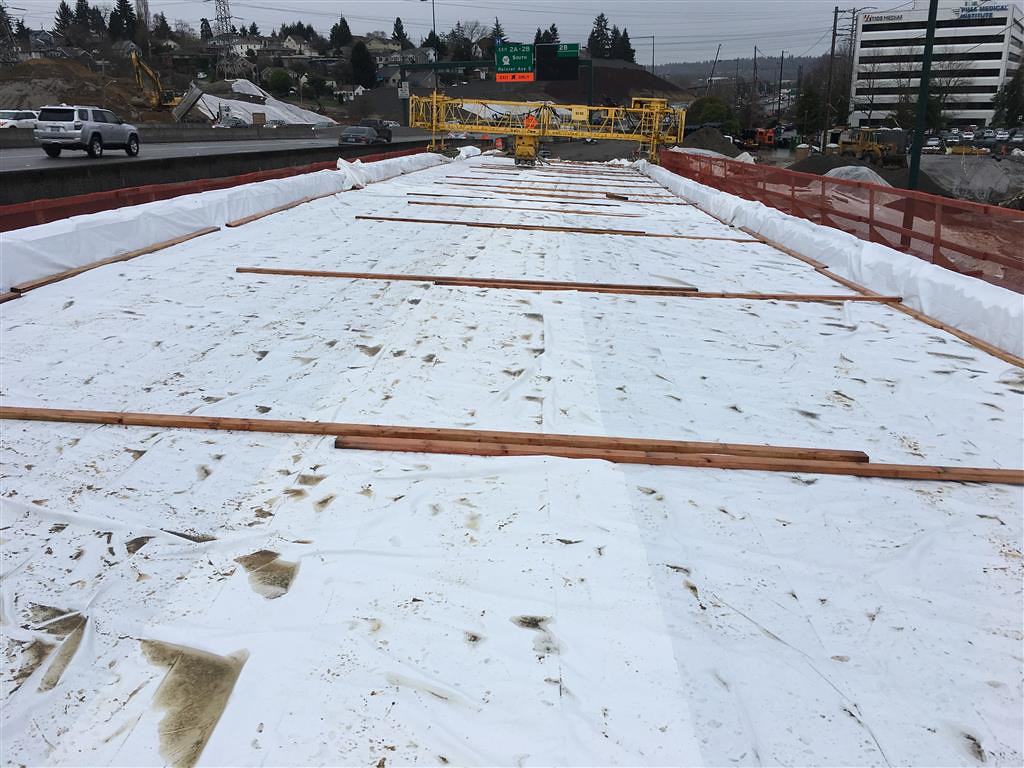Chapter C9 – Finishing and Curing Concrete
Key Competencies
The NOA for Carpenter (2013) identifies the required competencies (skills) for the task of finishing concrete. These are:
- Screed, float and trowel concrete using specialized concrete finishing tools and equipment such as magnesium and bull floats
- Use finishing additives such as colouring, aggregates and hardeners
- Apply architectural finishing techniques such as stamped, exposed aggregate, broom finish and edging
- Apply appropriate patching products to patch/repair concrete
- Apply epoxy products by brushing, rolling or spraying, according to desired finish and protection (NOA, p. 43).
The NOA for Carpenter (2013) also identifies the required competencies (skills) for the task of curing concrete. These are:
- Assess environmental conditions to determine protection needed for curing
- Install temporary heating or cooling systems to meet seasonal conditions
- Lay out and create control joints according to project drawings and specifications
- Cover curing concrete with materials such as wet burlap, polyethylene or thermal blankets
- Set up water systems such as ponding and soaker hoses to maintain a wet cure
- Apply chemical curing compounds and sealants according to specifications (NOA, p. 43).
After the concrete has been placed and consolidated finishing can begin once the bleed water has dried.
Tools used to provide a quality finish include:
- Edger
- Jointer
- Hand float and hand trowel
- Power float and power trowel

Source: https://commons.wikimedia.org/wiki/File:Construction_worker_J2a.jpg
Depending on the desired finish a variety of finishing techniques and products may be used:
- Broom finish
- Float finish
- Coloured finish
- Hardeners and Shakes
- Exposed aggregate
- Decorative
Surface treatment will also include the application of epoxy coatings and sealants to protect the surface and may also serve a decorative purpose.
Curing
For concrete to reach its designed strength the hydration (curing) process must be maintained. This is best achieved by keeping the concrete moist after it has been finished. Two ways to maintain moistness are to supply additional moisture and to prevent the loss of moisture through evaporation by covering the surface.
Methods include:
- Moist Curing
- Water retaining
- Mechanical barriers
- Chemical membranes

Source: https://www.flickr.com/photos/wsdot/39153281754
Temperature Effects
Placing and finishing concrete can be adversely affected by weather conditions. In hot weather, the concrete may experience rapid evaporation ending hydration. Early setting may result in a substandard finish. The danger in placing and finishing concrete in cold weather is that the concrete needs to maintain a certain temperature to cure. Precautions must be taken to prevent freezing.
For further information review “Principles and Practices of Commercial Construction” “Finishing and Curing Concrete.”
Review Instruction Sheet (IS) on Brightspace:
CONC 100/122, p. 72 – 96:
- IS 2.2 Tools for Finishing Concrete
- IS 2.3 Surface Treatment for Concrete
- IS 2.4 Curing Concrete
- IS 2.5 Problems Caused by Improper Curing of Concrete
Review Questions
- What is bleed water?
- Regarding finishing, when is floating to be done?
- What may happen if you float before the bleed water disappears?
- When is trowelling started?
- Name three methods of texturing a slab
- Describe when and how a broom finish is applied to a slab
- When and how is dry shake applied to a slab?
- What type of aggregate is suitable for exposed aggregate finish?
- List four types of decorative concrete finishes
- Name some different ways to cure a concrete slab
- In cold weather, concrete must be ____ and _____ before it is allowed to freeze for at least ___ days.
- What may happen to concrete heated by using an unvented fuel burning heater?
Answer:
- Excess mix water rising to the surface as the solids settle
- As soon as the bleed water disappears
- Increases the W/C ratio of the surface cement, causing a weaker surface where durability is most required
- Right after floating
-
- Swirl floating
- Brooming
- Towelling in a grit like silicon carbide
- Drag a moistened nylon broom perpendicular to the line of travel (across a sidewalk) with a pulling motion. This should be done after trowelling, time depending on how deep of a texture is required
- A dry shake color is applied to a slab right after bleed water has disappeared. Apply about 2/3 of the shake and float it in. Apply remained and float, then trowel
- Hard, sound, rounded aggregates of uniform size (less than 19 mm) and color
-
- Exposed aggregate
- Terrazzo
- Acid stained
- Polished
- Stenciled
- Stamped
-
- Curing compound
- Sheets of polyethylene
- Ponding
- Water sprays
- Heated and cured, 3 days
- Calcium carbonate may form on the surface of the concrete which causes dusting
